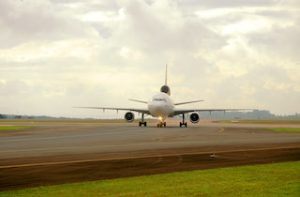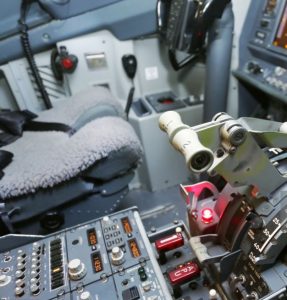Applications Of GEO_FS For Pilots
 In the ever-evolving world of aviation, technology plays a pivotal role in ensuring safe and efficient operations. Among the many tools available to pilots, GEO_FS stands out as a powerful platform designed specifically for managing geospatial data. This article will delve into the various applications of GEO_FS for pilots, illustrating how this technology enhances flight planning, improves situational awareness, and ultimately increases safety in aviation.
In the ever-evolving world of aviation, technology plays a pivotal role in ensuring safe and efficient operations. Among the many tools available to pilots, GEO_FS stands out as a powerful platform designed specifically for managing geospatial data. This article will delve into the various applications of GEO_FS for pilots, illustrating how this technology enhances flight planning, improves situational awareness, and ultimately increases safety in aviation.
Understanding GEO_FS
Before exploring its applications, it is essential to understand what GEO_FS is. GEO_FS is a geospatial framework that provides pilots with access to a wide array of geographic data, including maps, terrain information, weather conditions, and air traffic data. By integrating these datasets into a single platform, GEO_FS enables pilots to make informed decisions, enhancing their operational efficiency and safety during flights.
1) Flight planning optimisation
The most significant application of GEO_FS is in flight planning. Effective flight planning is crucial for optimising routes, reducing fuel consumption, and ensuring compliance with air traffic regulations.
-
- Route analysis: With GEO_FS, pilots can analyse multiple flight routes in real-time, taking into account various factors such as weather conditions, airspace restrictions, and terrain challenges. By visualizing different routes on the GEO_FS platform, pilots can select the most efficient path, saving both time and fuel. This capability is particularly beneficial for long-haul flights where minor adjustments can lead to substantial fuel savings and reduced flight times.
- Weather assessment: Weather is a critical factor in flight planning, and GEO_FS provides pilots with real-time meteorological data. By accessing updated weather information, pilots can avoid adverse conditions such as thunderstorms, turbulence, or low visibility. This proactive approach not only enhances flight efficiency but also significantly improves safety by allowing pilots to make informed decisions about potential route changes.
- Airspace management: Navigating through complex airspace can be challenging for pilots. GEO_FS provides up-to-date information on air traffic and airspace restrictions, allowing pilots to plan their routes more effectively. This feature minimises the risk of air traffic conflicts and ensures compliance with regulatory requirements.
2) Enhancing situational awareness
Situational awareness is a vital skill for pilots, enabling them to perceive and understand the factors that may impact their flight. GEO_FS plays a crucial role in enhancing this awareness.
-
- Real-time data access: GEO_FS offers real-time access to various geospatial datasets, including traffic patterns, weather updates, and terrain information. By having this information at their fingertips, pilots can make quick, informed decisions, particularly in dynamic flight environments. This immediate access to critical data enhances situational awareness, allowing pilots to anticipate changes and react accordingly.
- Visualisations and mapping: The GEO_FS platform provides intuitive mapping tools that enable pilots to visualize their flight paths, surrounding airspace, and geographical features. By understanding the terrain and other visual cues, pilots can navigate more effectively, reducing the likelihood of errors during critical flight phases such as takeoff and landing.
- Collaborative features: GEO_FS allows for real-time sharing of information among flight crews and ground support teams. This collaborative approach ensures that everyone involved in the flight has access to the same data, reducing misunderstandings and enhancing overall situational awareness. Improved communication among team members is vital for coordinated responses to unforeseen circumstances.
3) Proactive hazard management
The ability to identify and manage potential hazards is critical for maintaining flight safety. GEO_FS equips pilots with the tools needed for proactive hazard management.
-
- Hazard identification: GEO_FS provides pilots with up-to-date information about potential hazards, such as restricted airspace, obstacles, or severe weather conditions. By utilizing this information, pilots can assess risks along their planned route and make informed decisions about alternative flight paths.
- Terrain awareness: Understanding the terrain is essential for flight safety, especially when operating in mountainous or challenging environments. GEO_FS offers detailed terrain data that pilots can use to evaluate potential hazards. This awareness helps pilots avoid dangerous situations, particularly during approach and landing phases.
- Emergency response planning: In the event of an emergency, quick access to accurate geospatial data can be lifesaving. GEO_FS allows pilots to evaluate potential landing sites and emergency routes quickly. This capability enables them to respond more effectively to unforeseen circumstances, thereby enhancing safety.
4) Fuel management and efficiency
Effective fuel management is crucial for cost efficiency in aviation. GEO_FS aids pilots in optimising fuel consumption through various features.
-
- Fuel calculation tools: GEO_FS offers tools that assist pilots in calculating fuel requirements based on their flight plans. By analyzing factors such as weight, distance, and route, pilots can ensure they carry the appropriate amount of fuel for their journey. This not only prevents fuel shortages but also minimises excess fuel, leading to cost savings.
- Optimised flight profiles: GEO_FS provides insights into optimal flight profiles for different phases of flight. By analyzing data such as altitude and speed, pilots can adjust their flight profiles to enhance fuel efficiency. This capability is particularly beneficial for long flights, where small adjustments can lead to significant savings.
5) Regulatory compliance and documentation
Compliance with aviation regulations is essential for ensuring safe and legal operations. GEO_FS assists pilots in meeting these requirements.
-
- Airspace compliance: With GEO_FS, pilots have access to real-time information regarding airspace restrictions and regulatory changes. This feature allows them to plan their routes in compliance with regulations, avoiding potential penalties and enhancing overall safety.
- Record keeping: Maintaining accurate records is vital for regulatory compliance. GEO_FS simplifies this process by providing pilots with a platform to document their flight plans, weather assessments, and any changes made during the flight. This documentation can be crucial during audits or investigations, ensuring that pilots can demonstrate compliance with regulatory standards.
6) Training and simulation
GEO_FS can also be utilised in pilot training and simulation programs, providing a realistic environment for skill development.
-
- Realistic training scenarios: By integrating GEO_FS data into flight simulators, training programs can offer realistic scenarios that mimic actual flight conditions. This exposure helps pilots develop critical skills, such as navigation, decision-making, and emergency response, in a controlled environment.
- Enhanced learning experience: Using GEO_FS in training enhances the learning experience by providing students with access to real-time data and geospatial analysis tools. This exposure prepares them for real-world scenarios, ensuring they are well-equipped to handle the complexities of aviation.
7) Integration with other technologies
The future of aviation technology lies in seamless integration between various systems. GEO_FS is designed to complement other aviation tools and platforms.
-
- Compatibility with flight management systems: GEO_FS can integrate with existing flight management systems, allowing pilots to enhance their operational capabilities. This integration ensures that pilots have access to comprehensive data and tools in one unified platform, streamlining their workflows.
- Data sharing with ATC: GEO_FS facilitates data sharing between pilots and air traffic control (ATC). By providing ATC with real-time updates on flight paths and conditions, GEO_FS helps improve communication and coordination, further enhancing flight safety.
Wide range of usages
The applications of GEO_FS for pilots are vast and varied, enhancing every aspect of flight operations from planning to execution. By leveraging this powerful platform, pilots can optimize their flight paths, improve situational awareness, proactively manage hazards, and ensure compliance with regulations. The ability to access real-time geospatial data empowers pilots to make informed decisions, ultimately increasing safety and operational efficiency.
As the aviation industry continues to embrace technological advancements, the role of GEO_FS will undoubtedly grow, paving the way for safer and more efficient flight operations. By understanding and utilizing the applications of GEO_FS, pilots can stay ahead in a competitive and complex aviation landscape, ensuring a brighter future for aviation safety and efficiency.










